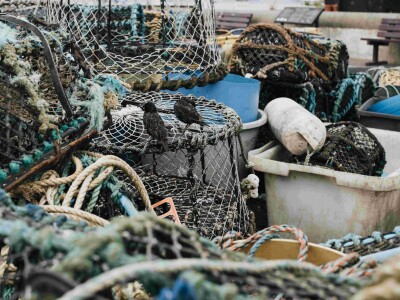Fresno -- A year ago federal officials trucked 116 spawning salmon to the upper San Joaquin River in Central California and invited media to watch them swim free for the first time since a dam cut off the river's flow a half century ago.
The effort to see if gravel riverbeds still could sustain eggs cost $237,000. A few months later, the offspring died.
The biologists had not figured out a reliable way to catch the smolt for a return to the sea across 60 miles of riverbed left dry when the Friant Dam began diverting water to create the richest agriculture region in the nation.
"They didn't plan ahead and say, 'How are we going to get the juveniles out?' It's that lack of planning that's frustrating," said Monty Schmitt, a scientist with the Natural Resources Defense Council, which sued the federal government decades ago to have the river and salmon populations restored.
After eight years of work, this January is the deadline for the once-mighty San Joaquin to be carrying enough water to allow spring and fall runs of chinook salmon to help revive the state's fishing industry.
But the highly ambitious river restoration has been plagued by unforeseen problems resulting in delays and increased costs. Land has subsided so much in places that engineers must figure out how to make the river run uphill. And farms, barns and roads are in the way of a river that wants to return to its marshy expanse.
After $100 million spent so far, the dry river is just as incapable today of carrying water as it was in 2006 when a historic agreement was struck among environmental groups, fishermen, farmers and the federal government to undo damage caused by dam diversions.
Re3ad the full story at San Francisco Chronicle>>






